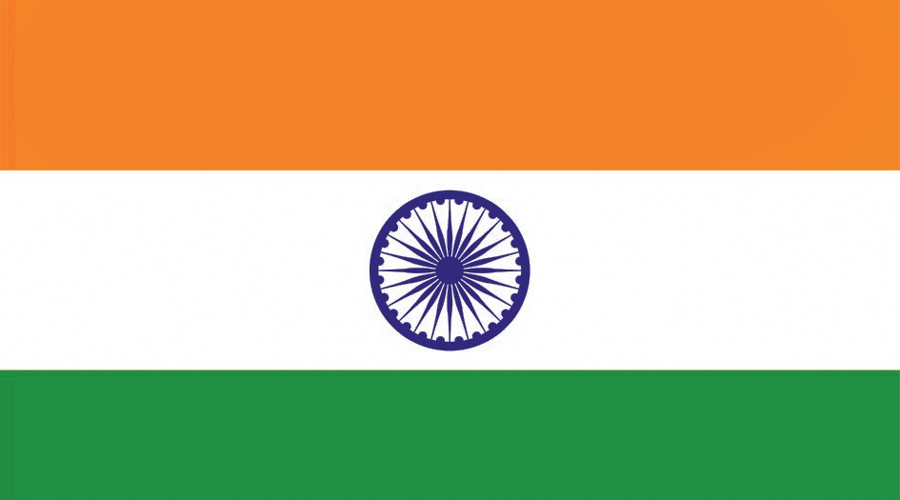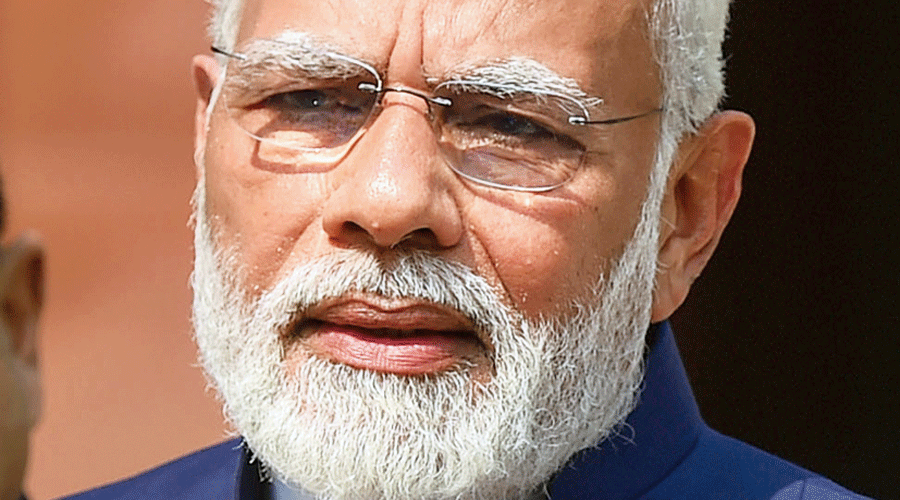A tweet by Prime Minister Narendra Modi that conveyed “some interesting nuggets from history” about the Tricolour has drawn a sarcastic retort from the Congress, with a reminder that the RSS had historically opposed the national flag in its current form.
The joust comes at a time the government has amended the Flag Code to allow Tricolours of machine-made and imported polyester, inviting Congress accusations of undermining khadi — the sole material allowed for the national flag till now — and the freedom movement.
“Today, 22nd July, has a special relevance in our history. It was on this day in 1947 that our National Flag was adopted,” Modi had tweeted in the morning.
“Sharing some interesting nuggets from history including details of the committee associated with our Tricolour and the first Tricolour unfurled by Pandit Nehru.”
Modi added: “Today, we recall the monumental courage and efforts of all those who dreamt of a flag for free India when we were fighting colonial rule. We reiterate our commitment to fulfil their vision and build the India of their dreams.”
Congress communications chief Jairam Ramesh immediately hit back, saying: “Hypocrisy Zindabad!”
“From someone who is destroying livelihoods of those who make national flags from Khadi, once described by Nehru as the livery of India’s freedom. From someone who was a pracharak in the organisation that took 52 years to hoist the National Flag in Nagpur!” Ramesh added.
The party’s social media head, Supriya Shrinate, said: “Dear PM, There’s another interesting nugget. You and your ideologue the RSS did not hoist the national flag, our beloved Tricolour, for 52 years. Read that again — 52 years.”
The RSS had opposed the Tricolour in favour of a saffron fag. It had also largely stayed aloof from the freedom movement.
Modi said in another tweet: “This year, when we are marking Azadi Ka Amrit Mahotsav, let us strengthen the ‘Har Ghar Tiranga’ movement. Hoist the Tricolour or display it in your homes between 13th and 15th August. This movement will deepen our connect with the national flag.”
It’s the Har Ghar Tiranga, which the BJP is pushing in an apparent attempt to refurbish its nationalist credentials, that has prompted the government to allow Tricolours of polyester, Indian or imported, to meet the expected surge in demand.
The Congress focused on highlighting certain historical facts instead of getting into a slugfest over the meaning of nationalism with the BJP.
Rahul Gandhi wrote on Facebook: “One organisation refused to accept the Tricolour for which so many people sacrificed their lives. They didn’t hoist the Tricolour at their headquarters in Nagpur for 52 years and continuously insulted the national flag.
“Today, people from the same organisation are teaching us the history of the Tricolour and campaigning for the ‘Har Ghar Tiranga’ programme.”
Rahul added: “These people who are obsessed with self-publicity should answer some questions. Why was the Tricolour not hoisted at RSS headquarters for 52 years? Why are the livelihoods of those who make the national flag with Khadi being destroyed? Why was the permission given for import of Chinese-made polyester for making national flag?”
The Congress has said the government’s decision on the fabric for Tricolours will boost imports from China and help one of Modi’s capitalist friends whose firm manufactures polyester. The party has expressed support for the Karnataka Khadi Gramodyog Samyukta Sangha, the sole manufacturer of Khadi Tricolours that conform to the Bureau of Indian Standards specifications, which has threatened a nationwide agitation and a legal battle against the nod to Tricolours of machine-made fabric.
At the Constituent Assembly meeting of July 22, 1947, that adopted the Tricolour as the national flag, Jawaharal Nehru had stated the specifications of the flag and described it as a symbol of freedom.
“This flag is not a flag of Empire, a flag of imperialism, a flag of domination over anybody, but a flag of freedom not only for ourselves but a symbol of freedom to all people who may see it,” he said.
“Wherever it may go, it will bring a message of freedom to those people, a message of comradeship, a message that India wants to be friends with every country of the world and India wants to help any people who seek freedom….”
The RSS objection to the choice of the Tricolour is well documented.
In December 1929, the Congress had sounded a call for “Purna Swaraj” (Full Independence) at its Lahore session and hoisted the Tricolour for the first time. The party appealed to the people to hoist the Tricolour everywhere on January 26, 1930.
Then RSS chief K.B. Hedgewar, however, instructed members to ignore the appeal and continue to worship the saffron flag. His successor, M.S. Golwalkar, said that only the saffron flag represented Indian culture.
On the eve of Independence, August 14, 1947, RSS mouthpiece Organiser said that Hindus would never accept the Tricolour. It said the number three was in itself an “evil” and would be detrimental to the national interest.
Sometime after the RSS was banned following Mahatma Gandhi’s assassination, then home minister Vallabhbhai Patel had conveyed to Golwalkar that his organisation’s acceptance of the national flag would be one of the preconditions for the lifting of the ban.
Although the RSS doesn’t explicitly oppose the Tricolour now, a controversy had erupted recently when Karnataka minister and senior BJP leader K.S. Eshwarappa said the “saffron flag” could one day become the national flag.
The Congress asked that Eshwarappa be sacked but there was no response from the BJP.
Eshwarappa had said: “The saffron flag has been respected in this country for a long time. It has a history spanning thousands of years. The saffron flag is a symbol of sacrifice. In the RSS, we pray in front of the saffron flag to inculcate that value in us. The saffron flag may become the national flag in this country today or someday. There’s no doubt about it.”












